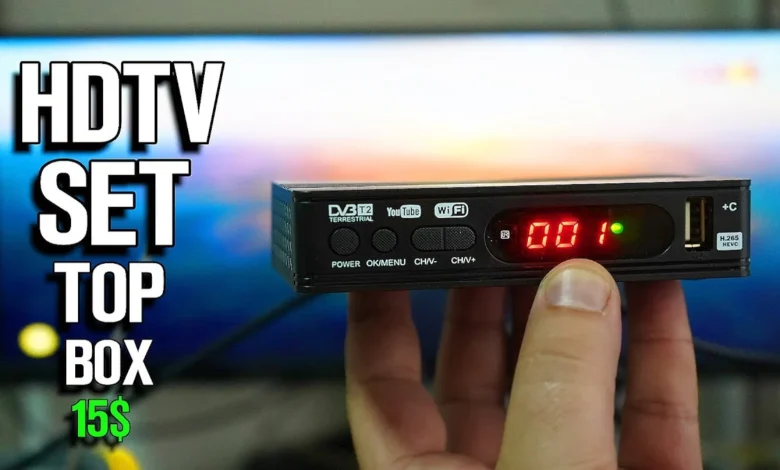DVB-T2: The Future of Digital Broadcasting

DVB-T2 In recent years, the way we consume television has drastically evolved. From traditional cable and satellite TV to online streaming services, there are now countless ways to watch content. Among the many advancements in the television industry, one of the most significant changes is the adoption of This, the second generation of Digital Video Broadcasting – Terrestrial. This is an innovative technology that promises to bring high-quality, over-the-air television to millions of viewers around the globe.
As the world continues to transition from analog to digital broadcasting, This has emerged as a game-changer, offering a wide range of benefits for both broadcasters and consumers. But what exactly is DVB-T2, and how does it work? In this article, we’ll dive into the key features, advantages, and potential of DVB-T2, providing you with an in-depth understanding of why this technology is shaping the future of digital television.
What is DVB-T2?
At its core, DVB-T2 is a digital television broadcasting standard designed to deliver high-quality TV content over terrestrial (land-based) transmitters. It is the successor to DVB-T, which was widely used for digital terrestrial television. While DVB-T provided a good standard of broadcasting, This takes things to the next level by offering improved compression, greater bandwidth efficiency, and the ability to transmit multiple HD channels in the same space.
This was developed by the DVB Project, an international industry consortium that aims to define global standards for digital television. This technology has been adopted in many countries across Europe, Asia, and Africa as part of their ongoing efforts to transition from analog to digital TV broadcasting.
One of the key advantages of This over its predecessor is its ability to deliver higher-definition content with improved audio and video quality. As more countries make the switch to digital broadcasting, DVB-T2 will become an essential part of the television infrastructure, ensuring that viewers can enjoy a better overall viewing experience.
How Does DVB-T2 Work?
To understand the inner workings of This, it’s important to first grasp the fundamentals of digital broadcasting. Traditional analog broadcasting uses continuous radio waves to transmit signals, which can often result in signal degradation, interference, and poor image quality. Digital broadcasting, on the other hand, uses binary data (ones and zeros) to transmit signals. This allows for much more efficient use of the available frequency spectrum, providing broadcasters with the ability to offer more channels, higher resolution, and superior sound quality.
DVB-T2 works by using a technique called orthogonal frequency-division multiplexing (OFDM), which allows multiple signals to be transmitted simultaneously over a single broadcast channel. This technique helps maximize the efficiency of the transmission, allowing for more content to be delivered in a smaller bandwidth. Additionally, This incorporates advanced error correction methods that help ensure the signal remains strong and clear, even in challenging reception conditions.
The increased bandwidth efficiency and higher data rates of This mean that broadcasters can deliver multiple high-definition channels on the same frequency, making it a more versatile and scalable solution for digital broadcasting. It can support a wide range of video formats, from standard definition to full high definition (HD) and even ultra-high definition (UHD) or 4K content. This flexibility is one of the reasons why This is considered the future of digital broadcasting.
Key Advantages of DVB-T2
There are several notable advantages of This over previous generations of digital broadcasting standards, making it a preferred choice for both broadcasters and consumers alike. Let’s take a closer look at some of these benefits.
Improved Broadcast Quality
One of the most significant improvements offered by This is the enhanced broadcast quality. Thanks to its advanced error correction and improved signal encoding, This provides a more stable and robust signal than its predecessors. This means that viewers are less likely to experience pixelation, audio dropouts, or signal interruptions, even in areas with weaker reception.
In addition to providing a more reliable signal, This can also support higher-definition video formats, including 1080p HD and 4K UHD. As more broadcasters adopt this, viewers can expect an overall improvement in video and audio quality, which is crucial as the demand for high-definition content continues to grow.
Greater Spectrum Efficiency
DVB-T2 is far more efficient in terms of spectrum utilization than previous digital broadcast standards. This means that broadcasters can transmit more channels and higher-quality content within the same frequency spectrum. The technology’s increased bandwidth efficiency allows for the simultaneous transmission of multiple HD channels, reducing the need for broadcasters to occupy a large portion of the spectrum for each channel.
This increased spectrum efficiency also means that This can support services like interactive TV, multi-channel audio, and additional data services, offering a more immersive and interactive viewing experience for consumers. As a result, This is a key enabler of the next generation of television services.
DVB-T2 vs. DVB-T: What’s the Difference?
While This builds upon the foundation of its predecessor, DVB-T, there are several key differences that set the two apart. Although both technologies are designed for digital terrestrial broadcasting, DVB-T2 offers a significant leap forward in terms of performance and efficiency.
Higher Data Rates
DVB-T2 supports much higher data rates than DVB-T, which means it can transmit more information over the same frequency spectrum. This translates into the ability to broadcast more channels, deliver higher-quality video, and support additional services. This is capable of transmitting up to 50% more data than DVB-T, making it a far more efficient broadcasting standard.
Advanced Modulation and Error Correction
DVB-T2 utilizes advanced modulation techniques, such as 256-QAM (quadrature amplitude modulation), which allow for higher data rates and improved signal robustness. Additionally, DVB-T2 employs more sophisticated error correction methods, including a feature known as LDPC (low-density parity-check) codes, which significantly reduce the likelihood of signal degradation and ensure that the broadcast remains clear and stable, even in challenging conditions.
Global Adoption of DVB-T2
The adoption of DVB-T2 has been widespread, with many countries around the world embracing the technology as part of their transition to digital broadcasting. The switch from analog to digital broadcasting is often referred to as the “Digital Dividend,” and DVB-T2 plays a central role in this process.
Countries like the United Kingdom, Germany, Italy, and France were among the first to adopt DVB-T2, with the technology now widely available across Europe. In addition to Europe, DVB-T2 has gained traction in countries across Asia and Africa, where it is being used to expand digital broadcasting services to remote and underserved areas.
The widespread adoption of DVB-T2 has been driven by its ability to deliver higher-quality broadcasts, greater spectrum efficiency, and the flexibility to support a wide range of services. As more countries make the transition to digital TV, DVB-T2 will continue to play a key role in shaping the future of television broadcasting.
The Future of DVB-T2

Looking ahead, the future of DVB-T2 appears bright. As more broadcasters adopt the standard and the demand for high-quality content continues to rise, DVB-T2 will become even more critical in the global landscape of digital broadcasting.
In the coming years, we can expect even more improvements to DVB-T2 technology, including the potential for higher resolutions (such as 8K), better integration with emerging technologies like 5G, and increased support for interactive services and applications. Additionally, the growing popularity of smart TVs and connected devices will allow consumers to enjoy This broadcasts in new and innovative ways.
The rise of over-the-air broadcasting in combination with IPTV, OTT platforms, and satellite TV will lead to more diversified television experiences. This, with its superior broadcasting capabilities, will likely serve as the foundation for a more unified and flexible media ecosystem.
Conclusion: Why DVB-T2 Matters
DVB-T2 is revolutionizing the world of digital television broadcasting, offering viewers a better, more reliable, and high-quality viewing experience. Its increased efficiency, support for high-definition content, and ability to transmit multiple channels in the same bandwidth make it a critical part of the future of television.
As more countries continue to adopt DVB-T2, it will become the standard for digital terrestrial broadcasting across the globe. For both broadcasters and consumers, DVB-T2 represents the next step in the evolution of television, paving the way for a new era of high-quality, over-the-air content. Whether you’re watching your favorite show in HD or experiencing the latest live sports event, This is changing the way we watch TV—forever.





